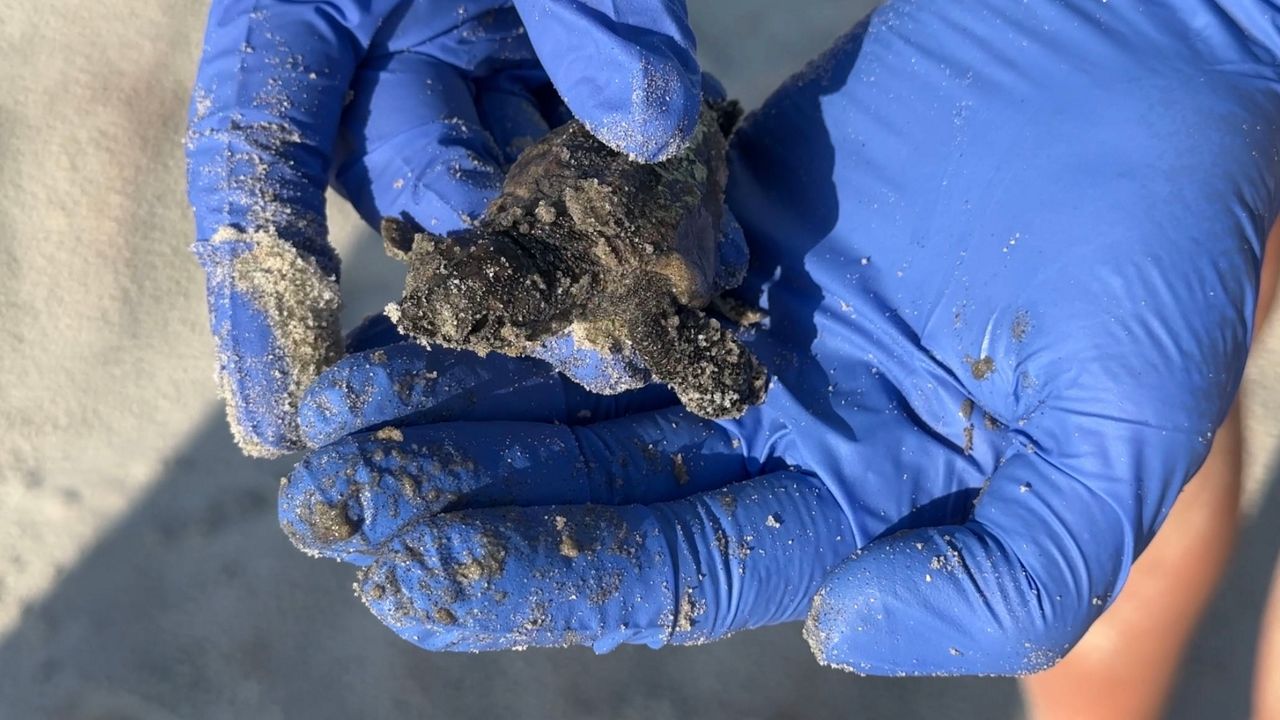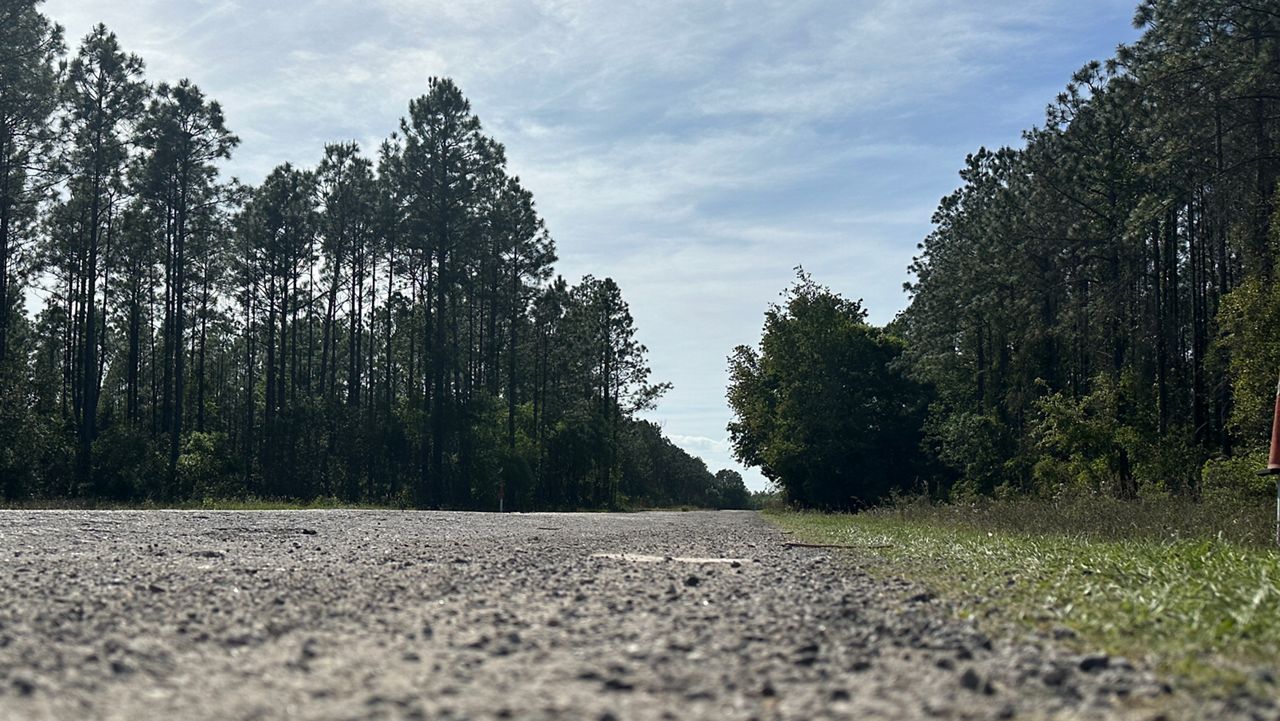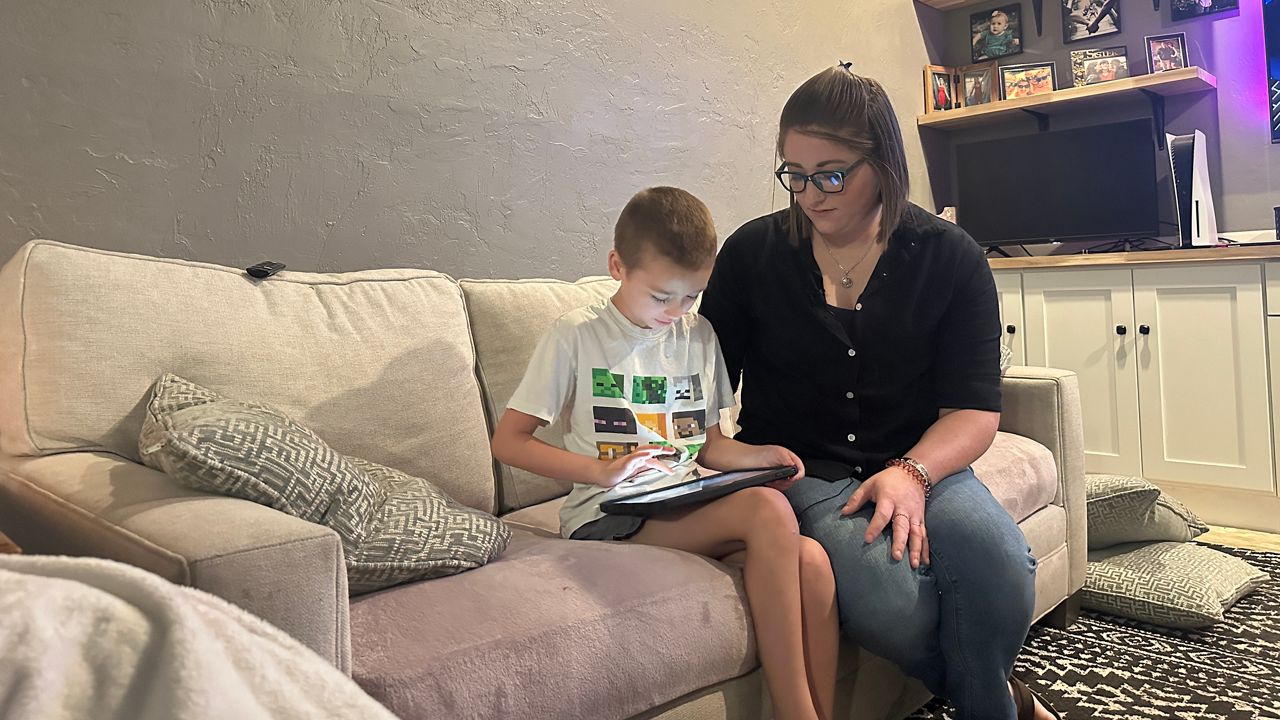PONCE INLET, Fla. — With nearly 1,500 nests laid, Volusia County is currently experiencing its largest sea turtle nesting season of all time.
Nearly 40,000 eggs have hatched across Volusia County’s coastline. This nesting year has already broken last year’s record of 1,427 nests and there are still six weeks left to go in the season.
The large nesting season does not come without its complications though, as hurricane damage from last year’s storms and heavy beach construction bring challenges for turtles and their hatchlings.
“Normally during nesting season, you would never see something of this nature,” Stacey Bell, a volunteer with the Volusia Turtle Patrol, said. “It’s been a very different season.”
Bell said there has been an increase in false crawls, which is when turtles come ashore to lay their eggs but can’t find a proper place to nest, so they return to the ocean. While this can be a natural occurrence, it’s sometimes the result of disturbances caused by humans.
“Unfortunately, we do get false crawls because of lighting disturbances, people disturbances, even people that don’t really know that they’re disturbing the turtle,” Bell said.
Construction debris, artificial lighting and seawall armoring can all contribute to false crawls.
Bell and other volunteers document these types of disturbances during their Turtle Patrol shifts.
“It’s important that we’re taking this data because all sea turtle species are either endangered or threatened,” Bell said. “Certainly we have a responsibility, in my opinion, to do as much good conservation work as we can to protect this species and their habitat into the future.”
Volusia Turtle Patrol volunteers check every single nest on Volusia County’s coastline throughout the turtle nesting season. That means volunteers are out every morning from May to October.
Bell, a volunteer of more than 20 years and a local science teacher, said it’s her love of turtles that keeps her motivated during her early morning shifts.
“I love this species,” Bell said. “I think sea turtles are one of the most intriguing creatures on our planet.”

During shifts, volunteers like Bell check all the nests in their assigned areas. They look for any debris or disturbances to nests and take action to help protect them.
Volunteers also check nests for any signs of an emergence, which is when baby sea turtles collectively climb out of their nest and make their way to the ocean.
Three days after an emergence, volunteers dig up the nest to count the number of hatched eggs and collect data. This is also when they’ll find any hatchlings that were left behind and give them a helping hand to the ocean.
Volusia Turtle Patrol volunteers are also responsible for marking new nests, relocating nests in dangerous areas and documenting their findings.
Some shifts can last up to five hours, but for Bell, they are always worth it.
“I’m hot and sweaty, but I’m ready to do Turtle Patrol all over again,” Bell said.
Volunteering and conservation work are both highly important to Bell. She cares about Volusia County’s sea turtle population and wants to make sure it’s protected and thriving for years to come.
“Every successful hatchling that emerges from our beaches is a success story in my mind,” Bell said. “It might be that one baby turtle that makes it out into the ocean and in 15 to 20 years will return to our beach to nest again.”
You can help keep nesting turtles and their hatchlings safe by not disturbing nests or dunes, limiting lighting on the beach at night, cleaning up trash and by filling in holes in the sand.
Reagan Ryan is a 2023 — 2024 Report for America Corps Member, covering the environment and climate across Central Florida for Spectrum News 13. Report for America is a nonprofit national service program that places journalists in local newsrooms to report on under covered issues.









